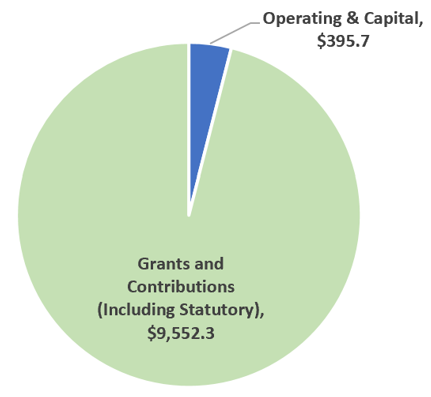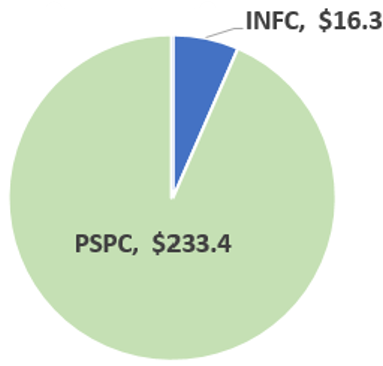Bill S-211, An Act to enact the Fighting Against Forced Labour and Child Labour in Supply Chains Act and to amend the Customs Tariff 2023-24
Bill S-211, An Act to enact the Fighting Against Forced Labour and Child Labour in Supply Chains Act and to amend the Customs Tariff 2023-24
On this page
- Background
- Structure and Activities
- Supply Chain
- Steps to prevent and reduce the risk of forced labour or child labour
- Steps taken to prevent forced labou
- Policies and due diligence processes in relation to forced labour and child labour
- Parts of its activities and supply chains that carry a risk of forced labour or child labour being used and the steps it has taken to assess and manage that risk
- Training provided to employees on forced labour and child labour
- Next Steps
Background
The Fighting Against Forced Labour and Child Labour in Supply Chains Act (the Act) came into force on January 1, 2024.
The Act stipulates that any government institution producing, purchasing or distributing goods in Canada or elsewhere must, on or before May 31 of each year, make a report publicly available on its measures to reduce forced labour and child labour.
The purpose of Bill S‑211 is to reduce the use of forced labour and child labour in supply chains by increasing transparency in these supply chains.
Structure and Activities

Text version of figure 1
A pie chart shows INFC's funding envelope by millions of dollars. The vast majority of the envelope shown is green, which refers to grants and contributions. It includes statutory funding for a total of $9,552.3. The small remaining part of the pie, in blue, shows the operating and capital dollars for a total of $395.7.
The mission of Infrastructure Canada (INFC) is to improve the quality of life of Canadians by creating jobs and economic growth, supporting climate resilience, and building a stronger and more inclusive Canada. INFC makes significant investments in public infrastructure and housing, builds public-private-partnerships, develops policies and delivers programs to improve the lives of all Canadians.
To develop and deliver programs effectively, the department relies on key partnerships with provinces, territories, municipalities, private sector companies and non-profit organizations, along with other federal departments and agencies. In fiscal year 2023-24, the department was funded for 1,567 Full-Time Equivalents (FTEs) employees and had a total authority of $9,948 Million (figure 1).
The department is made up of eight branches which oversee the overall delivery of INFC's major funding programs with an emphasis on climate resiliency and natural infrastructure, inclusivity, transit improvements, specific needs of rural communities, a greener economy, homelessness, housing and provides expertise on alternative and innovative project finance, public-private partnerships and major project delivery.
The management of the supply chain and the procurement of goods related to INFC's funding envelope is fairly limited from a departmental standpoint given that the vast majority of the funding is tied to Grants and Contributions for which INFC's stakeholders are responsible for the management of the supply chain and procurement of goods. The purchases of goods done by INFC under its authority is predominantly tied to office supplies as well as information management and information technology to support the 1,215 INFC FTEs.
Supply Chain

Text version of figure 2
A pie chart shows INFC's purchasing contracting entity in thousands of dollars. The vast majority of the contracting is shown in green, and were purchased through Public Services and Procurement Canada (PSPC). The remaining $16.3, shown in blue, were purchased by INFC.
In fiscal year 2023-24 INFC signed a total of $250K worth of goods contracts primarily tied to the purchasing of monitors, mice, computers and conference room equipment with most common brands being Microsoft, Dell, Samsung, LG and Logitech. All contracts, except one for $16K, were purchased through Government of Canada wide standing offer or supply arrangements managed by Public Services and Procurement Canada (PSPC) (Figure 2). These standing offers or supply arrangements are offers from potential suppliers to provide goods and/or services at pre-arranged prices, under predetermined terms and conditions that take into consideration anti forced labour clauses implemented by PSPC.
Above the contracts noted above, the department also purchased goods through departmental acquisition cards (maximum $10K per transaction), such as office supplies, ergonomic furniture and some specialized IT equipment for ergonomic needs. While the recommended procurement vehicle remains the PSPC standing offers, acquisition cardholders have the ability to acquire the goods through other means.
Steps to prevent and reduce the risk of forced labour or child labour
Steps taken to prevent forced labour
In fiscal year 2023-24, the department did not implement its own action plan to prevent and reduce the risk of forced labour or child labour. That said, the department always promotes the use of PSPC's standing offer or supply arrangements and abides to the Treasury Board Directive on the Management of Procurement which includes general contracting conditions that dissuade forced labour. Moving forward, the department is creating an action plan in 2024-25 to mitigate the risk tied to goods purchases via acquisition cards which will focus on awareness and training.
The risk and impacts of forced labour associated with INFC procurement of goods can be considered as low since approximately 95% of the annual value of the departmental purchases were made through the use of PSPC tools such as standing offers and supply arrangements who have implemented an anti-forced labour action plan.
Since November 2021, PSPC implemented anti-forced labour clauses in all goods contracts to ensure that it can terminate contracts where there is credible information that the goods have been produced in whole or in part by forced labour or human trafficking. Additionally, since November 20, 2023, all PSPC standing offers and supply arrangements for goods that have been issued, amended, or refreshed include anti-forced labour clauses.
As such, all of our contracts for goods resulting from the use of these tools include clauses relating to forced labour which set out, among other things, human rights and labour rights requirements. These clauses can be found in the Policy Notification 150 – Anti-forced labour requirements.
Policies and due diligence processes in relation to forced labour and child labour
From a government-wide perspective, effective April 1, 2023, amendments to the Treasury Board Directive on the Management of Procurement require contracting authorities from all departments listed in Schedules I, I.1 and II of the Financial Administration Act (with the exception of the Canada Revenue Agency) and commissions established in accordance with the Inquiries Act and designated as a department for the purposes of the Financial Administration Act to incorporate the Code of Conduct for Procurement (“the Code”) into their procurements.
Pursuant to the aforementioned amendments, INFC has integrated the Code into the department's procurement, with a view to safeguarding federal procurement supply chains from forced labour and child labour. Contracts that our organization has awarded included the Code through the General Conditions for goods.
The Code requires that vendors, providing goods and services to the Government of Canada and their subcontractors, comply with all applicable laws and regulations. In addition, the Code requires vendors and their subcontractors to comply with Canada's prohibition on the importation of goods produced, in whole or in part, by forced or compulsory labour. This includes forced or compulsory child labour and applies to all goods, regardless of their country of origin.
The prohibition on the importation of goods produced wholly or in part by forced labour came into force under the Customs Tariff on July 1, 2020. This amendment implemented a commitment in the Labour Chapter of the Canada-United States-Mexico Agreement (CUSMA) and applies to all imports, regardless of origin.
Parts of its activities and supply chains that carry a risk of forced labour or child labour being used and the steps it has taken to assess and manage that risk
In May 2021, a risk analysis of PSPC's supply chains was completed by Rights Lab, of the University of Nottingham (U.K.), to determine which goods were at the highest risk of exposure to human trafficking, forced labour, and child labour. The analysis, and subsequent report, elaborated key strategies for PSPC to leverage public spending power to raise awareness about forced labour in supply chains. Though INFC does not procure a large amount of goods, the largest risk to INFC's supply chain is related to the manufacturing of goods. INFC's purchases are primarily linked to informatic equipment and office goods for which the department does recommend using the PSPC standing offers or supply arrangements but that decision remains at the manager's discretion.
We have familiarized ourselves with information on the risk assessment provided by PSPC, and are monitoring related follow actions, including the development of a Policy on Ethical Procurement.
Training provided to employees on forced labour and child labour
We are aware that PSPC is currently developing awareness-raising guidance materials (including risk mitigation strategies) for suppliers, targeted towards high-risk sectors. We are monitoring the development of these materials and will leverage these resources upon their publication.
Next Steps
INFC is developing an action plan for the fiscal year 2024-25 that will identify risk areas in the supply chain, mitigation measures and training. As mentioned in the report, INFC's procurement of goods is very limited with the majority of its purchases uses pre-existing tools that already have a framework around mitigation measures to forced labour built around it. However, INFC acknowledges that there is room for continuous improvement and an opportunity to de-risk purchases done via acquisition cards by leveraging training and increasing awareness.
-
Copyright
© His Majesty the King in Right of Canada, as represented by the Minister of Housing, Infrastructure and Communities, 2024.
Catalogue No. T91-14E-PDF
ISSN 2818-386X
Report a problem on this page
- Date modified: